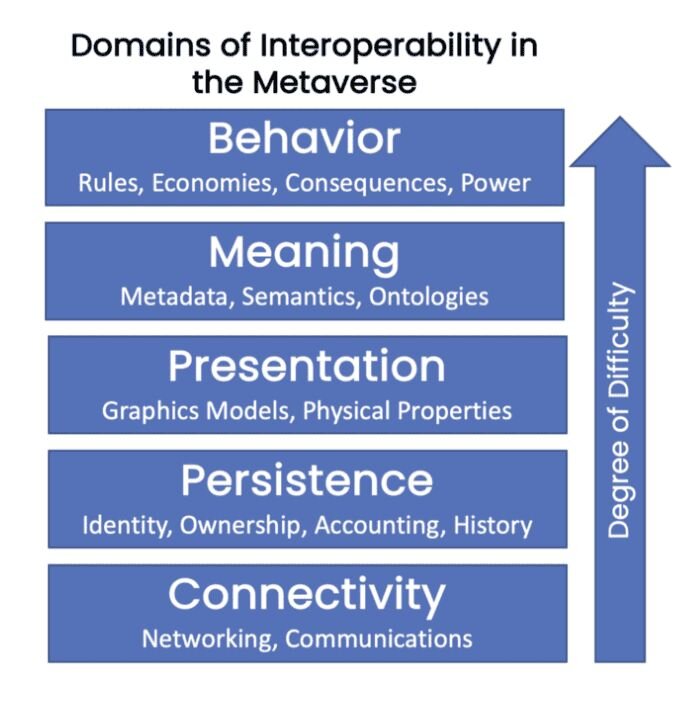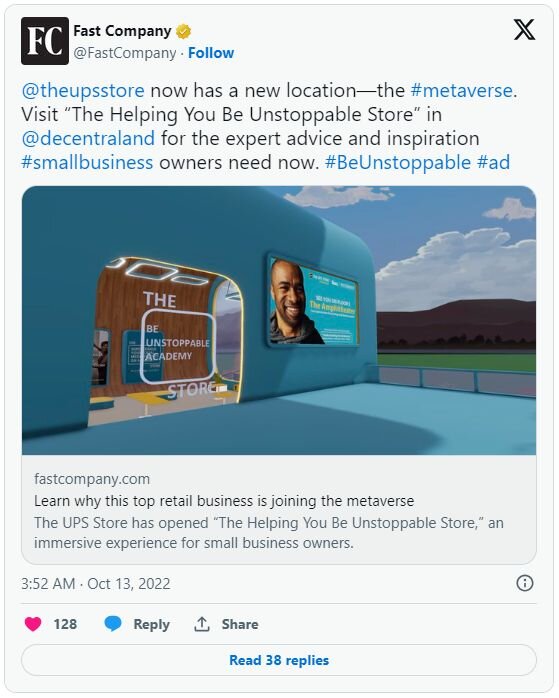Customer ExperienceAre your customers ready for the metaverse?
The metaverse is going to change things for your business—and by extension, the ways you interact with customers. It’s exciting. But it’s also uncertain. If you’re a scaleup focused on creating better customer experiences, you need to factor the metaverse into your thinking.
So, how can forward-thinking brands secure their place in the digital environment and gain an advantage over the competition?
Those who quickly gain a handle on serving customers in virtual reality (VR) could thrive. After all, more than 100 million Americans will become first-time VR users in 2022. And over a third of Americans already use VR products at least once a month.
Here are some things to consider.
The metaverse refers to a new way of interacting with technology. Wired defines it like this: “Broadly speaking, the technologies companies refer to when they talk about ‘the metaverse’ can include virtual reality—characterized by persistent virtual worlds that continue to exist even when you’re not playing—as well as augmented reality that combines aspects of the digital and physical worlds.
“However, the metaverse doesn’t require that those spaces be exclusively accessed via VR or AR. Virtual worlds—such as aspects of the game Fortnite that can be accessed through PCs, game consoles, and even phones—are sometimes referred to as ‘the metaverse.’
“Companies that have hopped on board the metaverse bandwagon also envision a new digital economy, where users can create, buy, and sell goods."
Confusion over what the metaverse actually is: 38% of Americans report familiarity with the metaverse, but less than one in five (16%) can correctly define the term, according to Ipsos. Like any drastically new service or product, teething problems and frustrations are guaranteed to inhibit customer interactions within the metaverse (think of the first time you fired up a Mac after a lifetime of Windows.)
Data transfer: Opening a help desk wherever your customers can be found in the metaverse is one approach. But if your service agents can’t adjust customer accounts, renew contracts, and order products, this touchpoint will become little more than a glorified signpost to your more traditional channels. Transferring data from customers to employees could pose a significant technical challenge because of the high volume of data, and also because of security concerns.
Staff training: Everyone knows how to use a phone. Not everyone knows how to navigate the metaverse. Until metaverse use becomes as widespread as smartphones and the internet, training staff to work in the metaverse will be more challenging and expensive.
More touchpoints: Despite the challenges, the metaverse has the potential to unlock many new ways for customers to interact with your brand. But, you’re only as strong as your weakest customer touchpoint. This means you’ll need to find a higher number of engaged, motivated staff who are ready to represent your brand in the emerging channel.
Interoperability: While the metaverse is an enormous and continuously expanding ecosystem, it’s still contained. Users can’t hop from one virtual reality to another in the way you can walk into different stores in a shopping mall. Allowing users to navigate seamlessly between relevant domains is multi-faceted, complex, and, so far, unresolved.

Beauty and fashion companies have taken the lead in metaverse commerce so far, according to a Forbes report. “Makeup, apparel, accessories, and beyond—are natural fits for this digital environment as advanced technologies enhance the virtual try-on experience.”
The same report notes that digital customers are showing more and more appetite for these virtual retail experiences.
Source: Euromonitor International Voice of the Consumer: Digital Survey 2022
As technology evolves, other industries will find natural places within the metaverse. For example, B2B organizations might open help desks and stores in and around virtual co-working spaces that house their target market.
Find the right application for your business. Think about the value you provide—how can you augment it with the experiences on offer in the metaverse?
If you sell a simple physical product, you should be able to display it and even sell digital versions of it in the metaverse—for example, fashion retailers could sell ‘skins’ (avatar clothing) that match their real-world stock.
If you sell complex software or hardware, you could deliver a more compelling, innovative remote sales pitch than you would using traditional meeting technology. And for existing customers, you could provide something close to in-person troubleshooting if they have technical issues or queries about their account.
Measure customer satisfaction. As with any new channel, it will be vital to keep track of customer sentiment and satisfaction in the metaverse.
Metrics like drivers of dissatisfaction (DSAT)—as well as customer satisfaction (CSAT)—help you pinpoint where customers encounter frustrations and why, so you can take steps to solve them.
Combine AI with human intelligence. Just like in the physical world, AI can help you fulfill simple customer requests quickly and easily. But you’ll need to combine AI with human agents who can provide the empathy that customers often need when facing technical difficulties or other challenges.
In the metaverse, it’ll be easier than ever to provide AI chatbots with avatars and mimic human service agents—but this approach could undermine customer trust if overused or if they attempt to solve overly complex requests.
Instead, clearly distinguish between AI and human interactions, so customers can set their expectations accordingly.
The metaverse is unfamiliar, exciting, and uncertain. Businesses everywhere are tentatively figuring out how to integrate this latest channel into their CX. If your business is trying to take the next step to customer experiences that go further and do more for your customers, we should talk.

